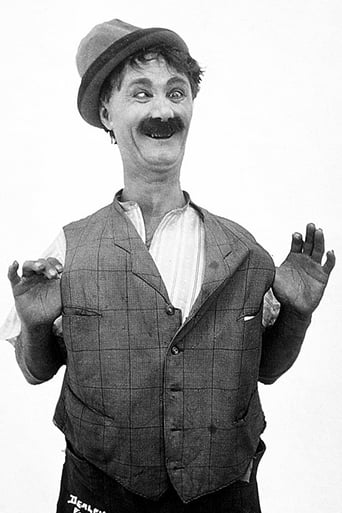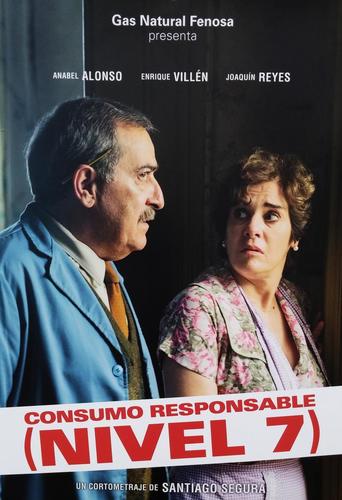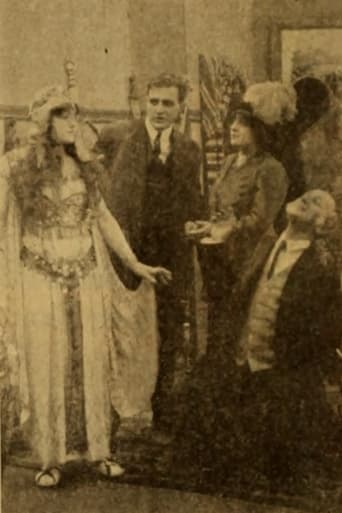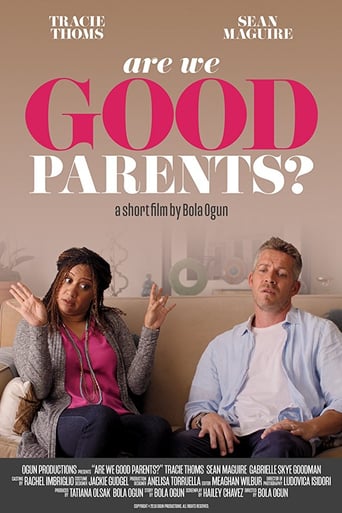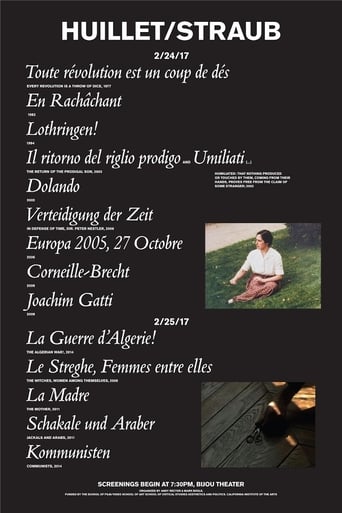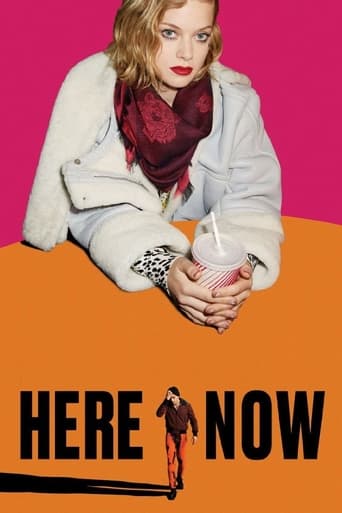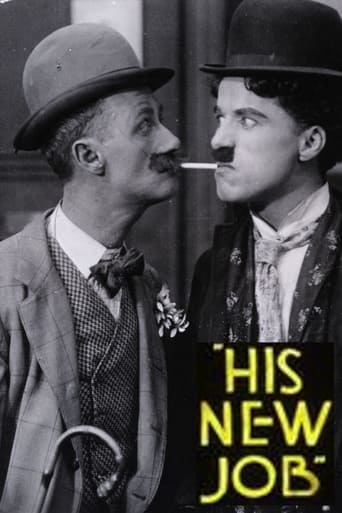

His New Job (1915)
When one of the actors on a movie set doesn't show up, Charlie gets his chance to be on camera and replaces the actor. While waiting, he plays in a dice game and gets on many people's nerves. When he finally gets to act, he ruins his scene, accidentally destroys the set, and tears the skirt of the star of the movie.
Watch Trailer
Cast
Similar titles
Reviews
Very best movie i ever watch
Lack of good storyline.
i must have seen a different film!!
Although it has its amusing moments, in eneral the plot does not convince.
Charlie Chaplin's first movie with Essanay (hence the title) casts him as a guy attempting to get a break in a movie, only to repeatedly make a mess of the production. There's plenty of funny gags, as is often the case in these relics of early cinema. The plot isn't the most complex, since Chaplin hadn't fully ironed out his style. A notable thing about the movie is that it features a young Gloria Swanson, years before her role as a certain big star amid small pictures.* It's not a great movie, but as far as I'm concerned, any Chaplin movie is a good one. You'll probably like "His New Job".*Swanson later testified on behalf of John Lennon when he was trying to gain US citizenship.
Chaplin's first Essanay Picture was released in February 1915. Chaplin is at a film studio looking for a job. After several bits of humorous business he is hired as an extra but after being a nuisance on set is instead demoted to Carpenter's Assistant. Through a mixture of wit and luck, Chaplin regains his position in front of the camera and ends up accidentally wearing the lead actor's costume. All hell breaks loose when he arrives on set to find Chaplin in his clothes and Chaplin again uses a mixture of wit, luck and this time also violence to continue in his job and get revenge on several characters who had wronged him.The film marks not only Chaplin's first film with Essanay but also his first with fellow comic actor Ben Turpin. The two share a couple of great scenes together, the first of which involves a fight to get through a door and is excellent. It's such a shame that the two actors couldn't find a way to work together because on screen at least, they made a great partnership. Unfortunately a mixture of Turpin's impatience with Chaplin's methodical methods and Chaplin's jealousy of Turpin's ability to get laughs, their partnership went no further.The film contains a few moments of great 'business' but they lack the inventiveness of Chaplin's later work. Most of them involve some sort of hit to the head and are fairly generic. The opening a door into someone's face gag was repeated about seven or eight times and a lot of the jokes can be seen a mile off. The sets also look paper thin but the film allows us a glimpse behind the scenes of a 1915 film set, something that I for one found fascinating.Towards the end of the film there is a nice tracking shot which follows Chaplin and a co star as they walk deeper into a move set. The shot was still in it's infancy at the time and gives the scene a bit of depth. It's a nice little addition and shows Chaplin is experimenting with new ideas and techniques. One of the fight scenes also contains a sequence which bears resemblance to Chaplin's great boxing scene from 1931's City Lights. The sequence is not as successful here but funny nonetheless.Overall the film is not amongst Chaplin's best but is one of the better of his early films. It features the Tramp getting into trademark mischief and bother and a nice cameo from fellow silent star Ben Turpin. Most of all though it gives a slight glimpse behind the scenes of a 97 year old film set and for that reason alone it is worth a watch.www.attheback.blogspot.com
One of Charlie Chaplin's many comedic talents was a sly satirical steak. In naming his first short for Essanay studios "His New Job", Chaplin was having a subtle dig at his previous contract holders, Keystone. Many of Chaplin's Keystone pictures had been assigned titles like "His Recreation", "His Musical Career", "His Prehistoric Past" and so forth. "His New Job" is thus a big raspberry at Keystone and its naming system, and was of course the last "His " title of Chaplin's career.As he would in many of his Essanay shorts, Charlie emerges from the back of the set, before plodding his way into the foreground. Whereas most of the Keystone pictures were silly through and through – ridiculous situations, ridiculous characters – Chaplin's tack at Essanay is to begin with a normal setting, populated largely with serious characters (although there are one or two silly ones for him to play off) and then to have the tramp emerging from the background to create chaos within that environment. Most of the gags come from messing with the conventions of the setting, using and abusing its props, and pricking the pomposity of those serious characters. It all equals bigger laughs than, say, everybody accidentally walking off with each others wives then hitting each other over the head with mallets.You can see how Chaplin's style as a director has developed since his earliest Keystone pictures as well. Chaplin's method is entirely based around one principle – that he is centre of attention. Even when he is not foreground and centre-screen, he still frames himself neatly to draw attention, like for example in the shot when the leading lady has come to sign her contract. Charlie has become a marginalized figure in the background, but he can still be fully seen and our eye is drawn to him. Another hallmark of Chaplin's style is these very long takes (as oppose to the frequent editing back and forth in Keystone pictures not directed by Chaplin), which allow him to draw out his comedy business and build up a series of gags. His New Job still features a lot of the Keystone-ish two-shot gags where someone is thrown or pushed off the screen, cutting to another shot of them falling over a few feet away.Although he no longer had the collaboration of Mack Swain, Fatty Arbuckle or Mabel Normand, Chaplin was starting to put together his own team of regular supporting players. Most notable here is of course Ben Turpin, playing Charlie's rival. Turpin moves and pratfalls like a comedy star, and Chaplin would soon ditch him for being too good. Also worth noting are Charlotte Mineau, who went on to star in about a dozen Chaplin shorts, usually as a slightly older woman in whom Charlie has no interest, and Leo White, one of the funniest and littlest-known of Chaplin's character actors.And there is another very important element here, one that would eventually be integral to Chaplin's later work – the mixing of comedy with poignancy. Towards the end of His New Job, the tramp plays a scene in which he begs the leading lady not to leave him. It is shot and acted exactly as if it were the finale of a romantic drama right up until the point where Charlie blows his nose and wipes his eyes on the hem of her skirt. While it's only a little moment and has very little to do with the overall picture, it indicates a very important principle in Chaplin's style – that poignancy can enhance comedy and vice versa.And finally, the all-important statistic – Number of kicks up the arse: 4 (3 for, 1 against)
There is something uniquely charming about the short comedies that Chaplin made that poke fun at his art form or that show us a little bit of the mechanics of how these movies are made. The most notable example other than His New Job is the charming and fun Behind the Screen, although this film is a lot of fun, too. It starts out in the waiting room, apparently for the opportunity to interview for a job as a film extra. He immediately begins flirting with a woman in the room, and soon does the old hat gag where someone demands that he take it off but he keeps putting it back on, finally doing that cute trick where he flips it up in the air. I feel like I've seen him do that in at least four or five films, although I have to say that he does it best in The Immigrant. It seems that the characterization is getting pretty developed by this point, and that the little tramp has earned a good following of fans who want to see him in each new Chaplin film. There is less and less effort put into giving him a role in each film, he generally just comes out and plays himself. There are lots of traditional Chaplin antics in the waiting room as he competes for the film extra position, although when he finally gets into the interview room and blows into that earpiece, it might be the first time I've literally laughed out loud at one of these short comedies in quite a while. Charlie is dressed as a soldier for his part in the film within the film, although as is to be expected, things soon go wrong and his lack of acting talent becomes abundantly clear. I always find it a little amusing when actors play roles in which, at some point, they lament the fact that they have no acting talent. But my favorite part of the film is that it shows us behind the scenes, what some of the film sets looked like back in 1915. I always find it fascinating when I catch a glimpse of something real in these old movies, even if it's something tiny, like wafting smoke or the unintentional movement of curtains or a throw rug. It is endlessly fascinating to me to imagine what it was like to really be there, what the set looked like to the naked eye, in real life and in color. Here, we are treated to some shots of the inside of the soundstage, which I guess is the next best thing. Generally, the movie is clever and fun, but other than some interesting behind the scenes shots there's really nothing new here. The ending is even a little violent, but this is still one of the more fun of Chaplin's earliest work.

